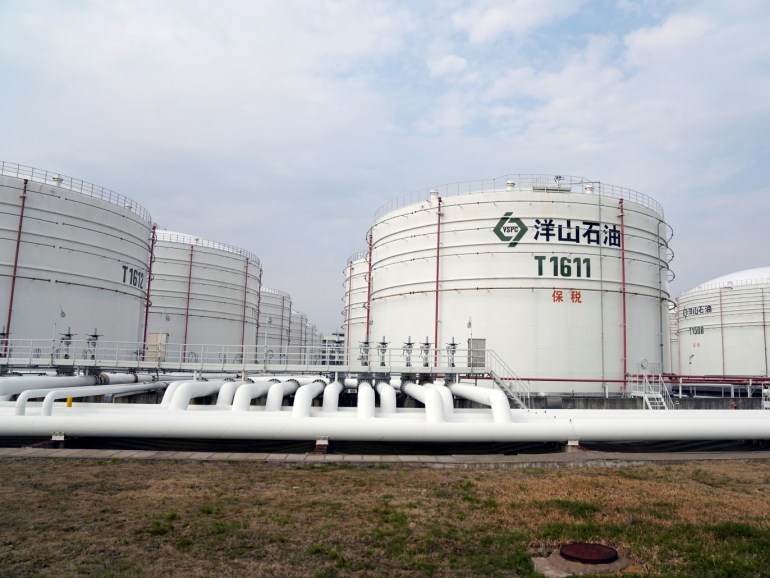Every citizen living in the European continent is waiting for a skyrocketing electricity bill prices, due to the energy crisis that has begun to hit all European countries, and has caused electricity and gas prices to rise five times compared to last year's prices.
European citizens are beginning to worry about the possibility of continuing this rise in the energy bill, while governments are rushing time to reduce the effects of this rise on the citizen's pocket.
Many reasons overlap in explaining this worrying phenomenon, which the Telegraph described as an “energy war”, starting with the acceleration of the economic recovery after the epidemic, the high demand for energy in Asia, and Russia’s calculations in which what is political is mixed with what is economic , reaching the stage of the energy transition in Europe.
Where does Europe get gas from?
Russia is the largest supplier of gas to Europe with 41%, then Norway with 16.2%, Algeria is in third place with 7.6%, followed by Qatar with 5.2%, and the rest comes from various sources.
These numbers make Europe highly dependent on Russian gas for its energy needs, which explains what will come from other reasons, in the energy bill rising by 500% during the current season, and according to the British “Financial Times” newspaper, what is happening shows the structural weakness. for the European continent in the provision of gas.
Europe is highly dependent on Russian gas for its energy needs (Reuters)
What is Russia's position in the crisis?
Last year's winter, which witnessed a drop in temperatures in Asia and Russia, contributed to the depletion of storage in Russia and its reaching low levels, and while the European version says that Gazprom did not do what was necessary to push European countries to restock, and refused to ship additional supplies through Ukraine other than What was agreed under the long-term contracts between the two parties.
As for the Russian version, it says that priority should be given to the internal market over high domestic demand, while Ukraine says that Moscow wants to "militarize gas", to pressure Germany in order to speed up approval of the controversial "Nord Stream 2" pipeline, which will enable the delivery of Gas supplies directly from Russia to Germany via the Baltic Sea.
Russia has also started supplying gas to China through the Power Siberia pipeline through previously unused gas fields. Gazprom is also studying the construction of a new pipeline that will connect these fields to Western Siberia, China, by 2030.
Why is the demand for energy in China soaring?
Asian demand for gas has grown rapidly by 50 percent over the past decade, led by China, whose consumption has tripled in the last ten years.
The cold winter, then the hot summer that China experienced, and then the return of economic growth, contributed to the strongest increase in energy in China, and this is the reason for the current electricity crisis in China.
China reduced coal consumption months ago to reduce polluting emissions, but it will be forced to return to the coal market to operate power plants, which led to the rise in thermal coal prices in Asia to record levels.
The electricity crisis in Asia was exacerbated by India's passing through the same conditions that China is going through, as demand for energy rose in an unusual way, and currently all economic indicators say that there is not enough coal in Asia to cover the demand.
Electricity generation in China rose by 616 TWh, recording a 13% increase, during the first eight months of this year compared to last year, and there are expectations that China will have to lift the ban it had previously imposed on Australian coal to respond to internal demand.
China has launched a plan aimed at reducing gas emissions, which makes it increasingly dependent on liquefied gas, which means that it will become a competitor to Europe in importing gas.
China launched a plan to reduce gas emissions, making it increasingly dependent on liquefied gas (Reuters)
What about Europe?
Europe has entered a zero-emissions energy transition, which has reduced investors' willingness to put money into developing supplies of fossil fuels that they believe will be a thing of the past over the next three decades.
Domestic gas supplies in Europe have also fallen by 30%, and although the demand for gas goes mainly to heavy industries, dependence on it in winter rises significantly in homes, for example, about 40% of total gas consumption in the United Kingdom goes directly to heating homes .
Among the reasons for the decline in gas stocks in Europe, is what is experienced by the Groningen field in the Netherlands, which is the largest gas field in Europe, because the goal of this field was to maintain balance in the European market, but it turned into a burden on the Dutch government, and the decision was taken to start In closing, the field is now pumping three-quarters less than it did in 2018.
Which countries are affected?
All European countries will experience an energy crisis during this winter, with expectations of stable energy prices starting next year, according to the latest publication of the International Monetary Fund, but the extent of the damage will differ from one country to another.
For France, it will not suffer greatly due to its heavy dependence on nuclear-powered power generators, which prompted President Macron to announce an investment of one billion euros in these plants by 2030.
As for Norway and Sweden, they depend heavily on hydroelectric power, and Portugal depends on wind and water to supply half of its energy needs.
It appears that Britain will be the most affected by this crisis, due to its great dependence on natural gas, whose prices are skyrocketing, in addition to its lack of large capacities to store it, and finally because it is no longer part of the European energy market, which may deprive it of supplying energy from Europe.

